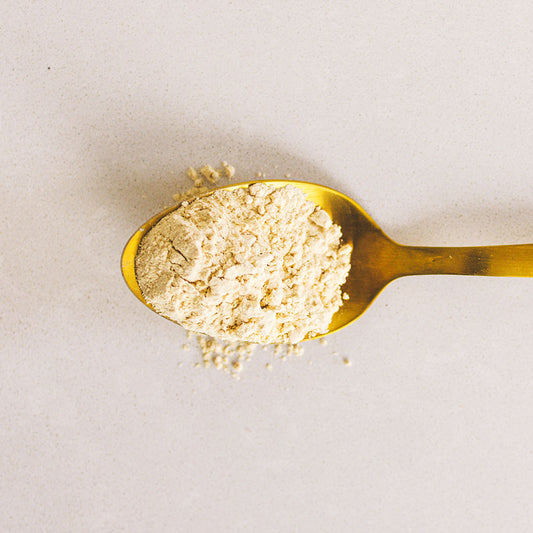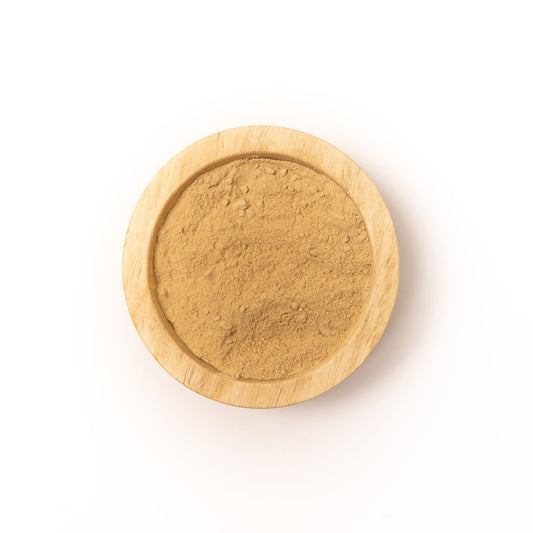Welcome to our Birthing Ayurveda Postpartum series, where we follow the developing story of one woman's first steps into motherhood and life in her new role.
My midwife told me that every mother has a challenge that is particularly trying for her. For some it is a colicky baby, for others it is sleep challenges, or perhaps it is diaper rashes and skin difficulties. For me, it was breastfeeding. I have an amazingly happy and overall independent baby—really nothing to complain about with her. But breastfeeding has taken me for a ride.
I probably have had every breastfeeding issue possible—latch issues, deep milk sinuses, blocked ducts, milk blebs, vasospasms (read more below)—some of which, such as vasospasms and ductal candidiasis, even most doctors do not have much experience with! But to those who are in a similar boat or are considering stopping breastfeeding (because it really is hard!), let me start with some encouragement.
Consider first the bonding that you get with your child. I started feeding lying on my side after a month or two in because it helped quite a bit given my deep milk sinuses, and, in doing so, I realized that there is something very special about your baby nuzzled up against you while feeding. It's one of the times that I feel most connected to her in a very intimate way. Whenever I have even fleeting thoughts of quitting, I just think about how it is one of the closest times we have, and therefore, one of the most important times for her to feel that I will always be there for her.
Then consider all of the science that is showing just how amazing breastfeeding is for the baby. Just the other day I saw a research study showing that babies who are exclusively breastfed have greater development in key parts of the brain, mainly in charge of language, emotional function, and cognition.1 I also read a very eye-opening article on breastfeeding. It is common knowledge that breastfeeding is a complete meal with many nutrients for babies and how it supports their immune system by giving the babies' immune system cells from the mothers based on what germs the mother's immune system has seen. But this article shares the theory of how the baby's body also communicates with the mother by sending signals into the mother's body through the baby's saliva. In response, the mother's body makes the necessary defenses to help the baby's immune system and sends it right back to the baby.2
As the author says, “It's potent medicine and, simultaneously, a powerful medium of communication between the mothers and their babies.” It's how the two bodies communicate. This made me ponder on what else is shared during this intimate time—food tastes, hormones, and on subtler levels, prana and other forms of energy!

When my mother was here, she always scolded me for being on my phone or doing literally anything besides focusing on my daughter while breastfeeding. She kept telling me my whole attention should be on the baby and giving her good thoughts and energy during this time. She was absolutely right.
So if you are on the fence, do not quit! It gets better—sooner for some than others (my daughter is now two and a half months old and I still face challenges but it is better!). Here are some lessons I have learned that I hope will prove useful to you.
- Find a lactation consultant with a lot of experience. Hands down, there is no way that I would still be breastfeeding today if it were not for my midwife who is also a certified lactation consultant. With years of experience, she has many tricks up her sleeve that helped in many ways as we encountered various issues. She came to my home to help troubleshoot and give me hugs of encouragement. I am so grateful for her.
- Support milk production with herbs, especially in the early days. I soaked fenugreek seeds in a glass of water and drank the water and ate the seeds first thing in the morning every morning. I ended up having an oversupply issue, so I stopped this a month and a half in, and not too long ago when I felt my supply was decreasing, I did it again and I ended up being overly engorged again in the morning. It works wonders for me. Shatavari, when the digestive fire is strong, is also powerful for supporting lactation. Dill is another supportive herb that we tossed into all of my food, and also added the seeds to the tea that I drank throughout the day. It is always wise to check in with your practitioner before taking herbs during lactation.
- Hydrate like crazy. I made sure I drank at least a glass of water with each feed. I also drank ample amounts of tea boiled with various herbs (see Part 1). You can also drink water boiled with CCF Tea, made of cumin, coriander and fennel seeds to help with hydration and keep the plasma clean.
- If you have a plugged duct, act fast! The best way to relieve a plugged duct is to do everything you can to mobilize the duct and prevent it from stagnating further. Before nursing, massage the breast with oil working from the outside of the duct towards the nipple. There should be very steady and firm pressure (it was not a pleasant feeling). I often did this in the shower to get the added benefit of the moist heat. Then immediately nurse with the baby's chin facing the clogged duct. I would literally get on all four's and dangle my breast over her face while she feeds to get the right position. This position also takes advantage of gravity to assist in relieving the stagnation. After feeds, massage, massage, and massage some more. You can also try massaging in a bath on your belly to get gravity to help. I will also put a recommendation in for lecithin, a fatty acid found in our food, which acts like an emulsifier (it prevents fat from sticking together). I take this three times a day. This is a case of stagnation, so think kapha! You want to avoid very heavy, saturated, sticky fats that will only increase kapha. Drink ginger tea and hydrate plenty as well.
- Provide friction for milk blebs. One of my plugged ducts came from a white spot on my nipple, which I realized was a milk bleb (a thin layer of skin overlays the opening of the duct creating a blockage). For this, I soaked my breast in a pot of very warm water with Epsom salt, and interrupted the soak every five minutes or so by rubbing the bleb with a wash cloth. Then I fed as described above. The clog released with her next feed.
- Keep looking for causes of pain. My journey with breastfeeding and pain has been a long one and is still continuing to a certain extent. The first thing that always comes to mind is a poor latch and by and large that is the reason. This is where a great lactation consultant can really be helpful. But after a couple of months, I was not satisfied with that as the only answer. I found that I had pain after feeding that was deep in my breast. It was vasospasms (where the blood vessels have constricting spasms), for which warm compresses, taking magnesium, calcium, and vitamin B6 supplements, and staying warm are really helpful. With vasospasms, it is important to still look deeper for the inciting cause. It can be, again, a poor latch or it can be some kind of infection. There are unconventional manifestations of mastitis (infection in the breast), which do not present with the normal redness, warmth, or a painful lump. I have heard of people using various natural remedies for this, although I would not hesitate to take antibiotics if I knew I had an infection (breastfeeding is challenging enough). You can also have what is called ductal candidiasis (a yeast infection of the milk ducts), which was what I had. I had burning along with the pain. I also noticed my nipples looked more red and inflamed (nothing particularly obvious), and looking back retrospectively, I realized that my daughter has always had a white patch on her tongue which I just assumed was a milk patch (although your baby does not have to have a visible yeast infection in their mouth for you to have this condition). I took various prescriptive medications, sanitize washed all clothing and linens that she and I came in contact with, washed my nipples with vinegar after each feed, took turmeric throughout the day, spent time with my breast exposed to the sun daily, and it still persisted to a certain extent. After much discussion with my practitioners, what really did the trick for me was gentian violet (a very old medication that is a dye and is awfully messy but very effective at killing yeast and bacteria within a few days in most cases) and following a diet low in kapha foods to discourage the growth of Candida yeast. I am sharing what worked for me, but please keep in mind that it is always important to work with your practitioner! In the case of infections, again ask why. Is there too much pitta? Is there stagnation from kapha or too much dryness from vata preventing the proper flow of fluids? How is your gut flora and do you need probiotics? A healthy gut flora helps keep your body's natural bacteria and yeast culture in balance. I have started taking probiotics daily and giving my daughter baby probiotics as well.
- Take care of your heart chakra. I could not help but wonder why breastfeeding was my greatest challenge. I have to consider this as an Ayurveda practitioner and patient. This sweet baby of mine was still a little foreign to me. I know many mothers connect immediately, but for me it took some time to get to know her, though I loved her and cared for her deeply from the beginning. Couple that with all of the stresses of postpartum—I hate to admit that there were times when I resented the whole situation. Given that, I have taken care to use this feeding time to open my heart to her and fully accept her for whom she truly is—a pure Soul. She is so innocent and deserves nothing less. Breastfeeding is a form of communication for the mother and baby, and that has certainly been the case for us. Like all relationships, ours is a growing one filled with so much learning.
DISCLAIMER
The views and opinions expressed in this article do not necessarily reflect the views and opinions of Banyan Botanicals. Our blog is a place where people who participate in and benefit from Ayurveda can share their experience and knowledge. Before starting any new activity, routine, or program, we recommend that you consult with your physician or healthcare provider. Please also note that our content is not meant to be a substitute for professional advice.











